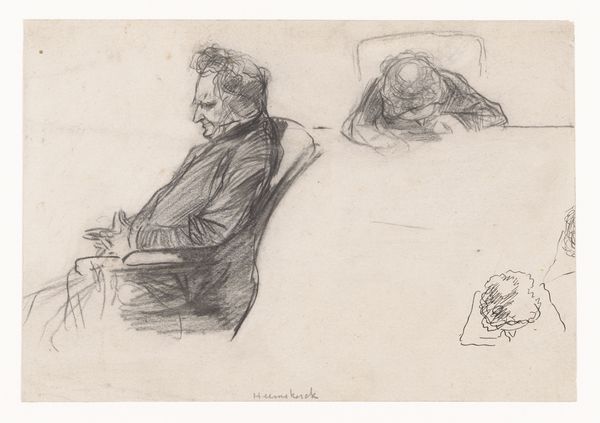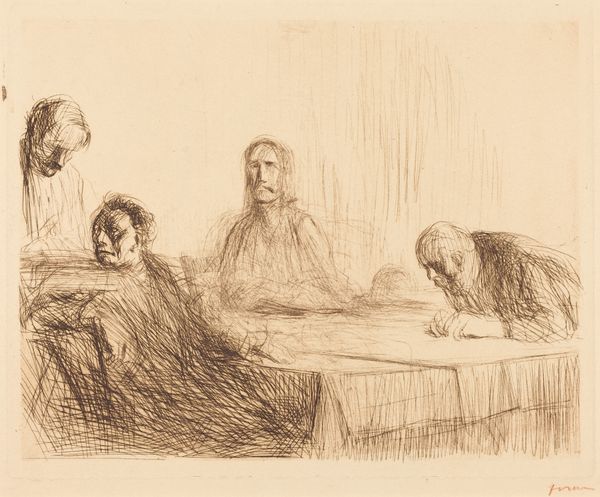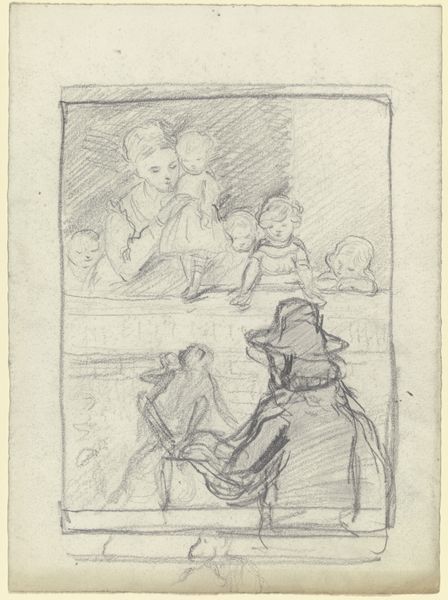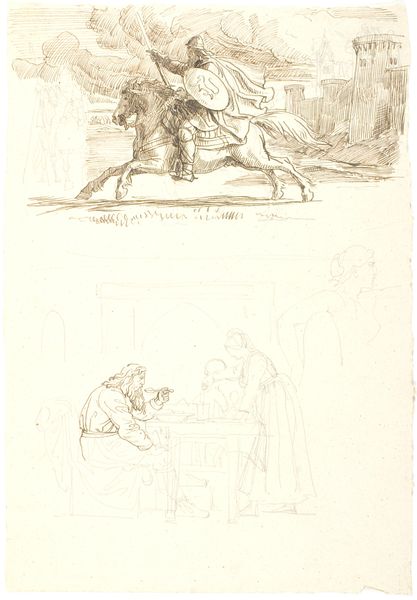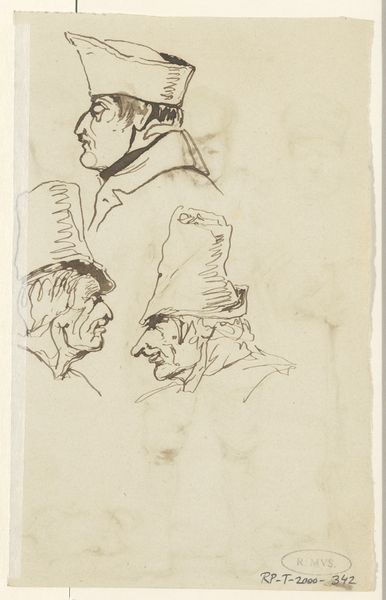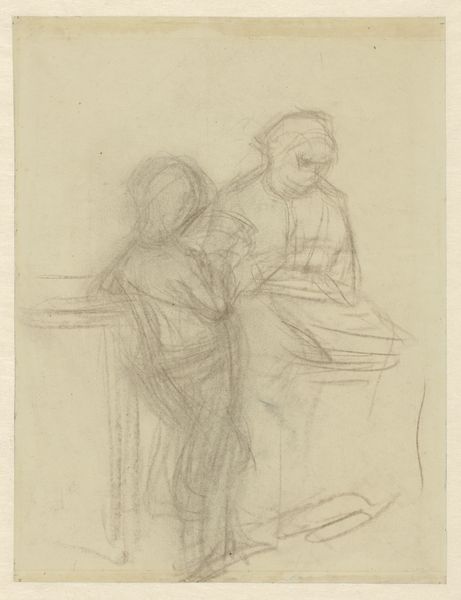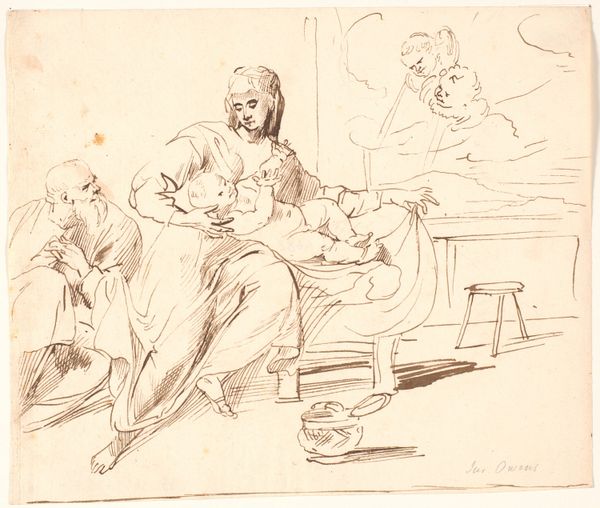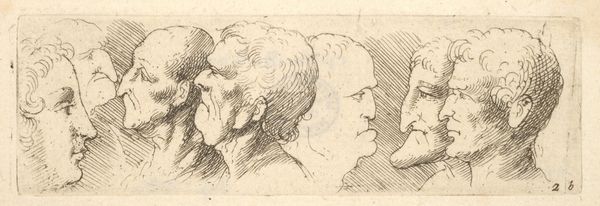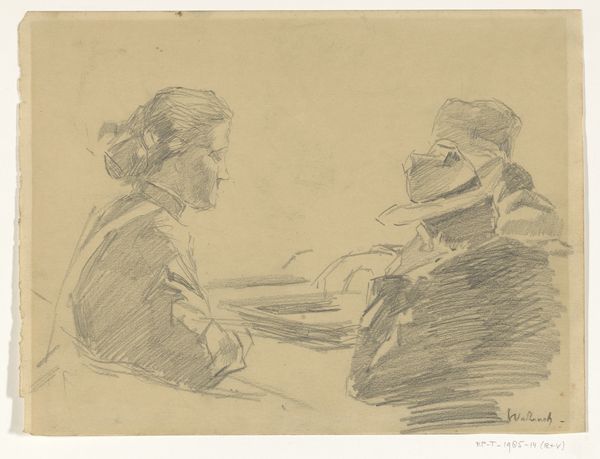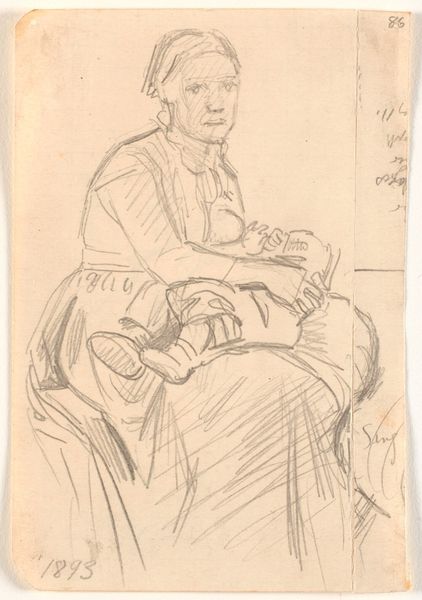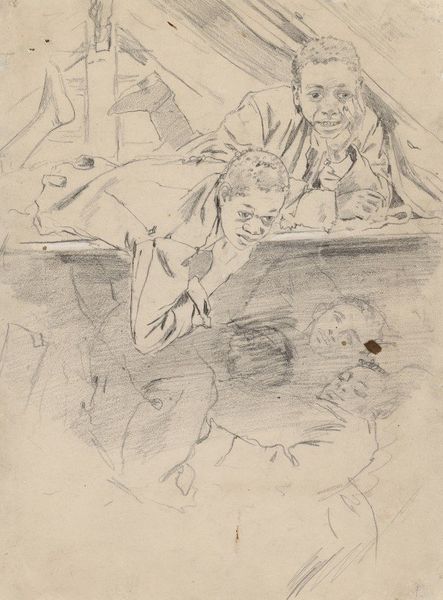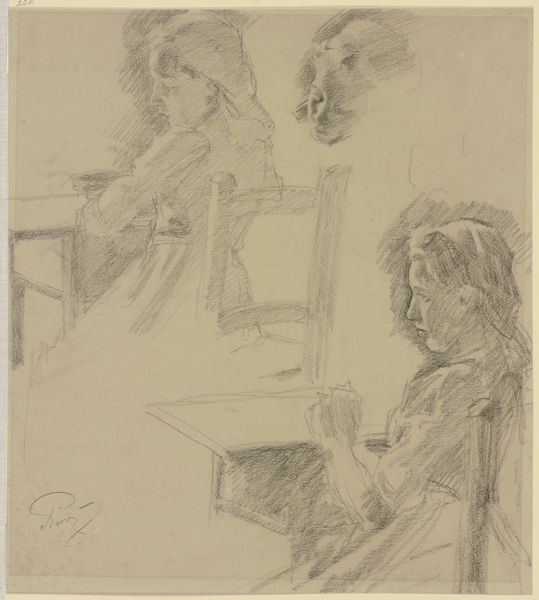
Holberg'sk scene: To kvinder snakker ivrigt til en parykklædt retsskriver 1810 - 1873
0:00
0:00
drawing, ink, pen
#
drawing
#
pen sketch
#
ink
#
pen
#
genre-painting
Dimensions: 197 mm (height) x 117 mm (width) (bladmaal)
Editor: This pen and ink drawing, "Holberg'sk scene: To kvinder snakker ivrigt til en parykklædt retsskriver" by Wilhelm Marstrand, was created sometime between 1810 and 1873. The sketch gives the impression of an unfinished play scene. What stands out to you about this piece? Curator: The way Marstrand positions these women in conversation with the bewigged scribe immediately makes me think about power dynamics. Consider the performative aspects of justice, especially in a patriarchal society. Are these women seeking genuine recourse, or are they enacting a kind of resistance? Editor: I hadn't considered it that way. The women seem so animated, and the scribe appears almost indifferent. Is that contrast intentional, do you think? Curator: Absolutely. Look at how their bodies lean forward, their faces are so expressive. Now compare that with the scribe, who’s framed by this formal, almost artificial wig. I would say that is meant to emphasize that power doesn’t reside in truth or justice, but rather performance and accepted conventions. It raises questions about who has the right to speak and whose voices are amplified within the system. Does it prompt any further questions for you? Editor: It definitely makes me wonder about the historical context of women’s legal standing at that time. Were they often dismissed or unheard? Curator: Precisely. Think about the broader societal constraints placed upon women, their limited access to legal representation, and their vulnerability within patriarchal structures. How does Marstrand's depiction of this interaction, frozen in time through his ink, speak to these challenges? Editor: It feels like a subtle critique of the justice system and the inequalities inherent in it. Thank you for opening my eyes to it. Curator: Of course. The beauty of art lies in its capacity to spark these dialogues, challenging us to reflect on power, representation, and historical injustices.
Comments
No comments
Be the first to comment and join the conversation on the ultimate creative platform.
